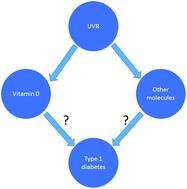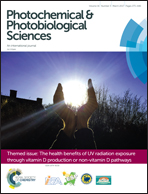Are low sun exposure and/or vitamin D risk factors for type 1 diabetes?
Abstract
The global variation in type 1 diabetes (T1D) incidence rates is one of the most significant observed for any non-communicable disease. Geographical patterns in incidence suggest that low sun exposure may contribute to the wide disparity, with incidence rates generally increasing with distance from the Equator. T1D development is associated with hyperactivity of the adaptive immune system leading to autoimmune destruction of insulin-secreting pancreatic β cells. Both exposure to ultraviolet radiation (UVR) and vitamin D, with their known immunosuppressive effects, have the potential to delay or inhibit the disease. Efforts to confirm the role of UVR by vitamin D dependent and independent pathways in the pathogenesis of T1D have been challenged by inconsistent results among studies. Human observational studies and animal and in vitro experiments indicate that at least some of the benefits of sun exposure come from improved vitamin D status. There is no evidence of benefit for T1D risk of vitamin D supplementation during pregnancy at current recommended levels (400 IU per day); but some evidence supports that higher sun exposure and/or vitamin D sufficiency in pregnancy, or supplementation in early life, decreases T1D risk. Further research is required to confirm an association between UVR exposure and T1D and clarify the mechanisms involved.

- This article is part of the themed collections: 2017 Perspective articles collection and The health benefits of UV radiation exposure through vitamin D production or non-vitamin D pathways

 Please wait while we load your content...
Please wait while we load your content...